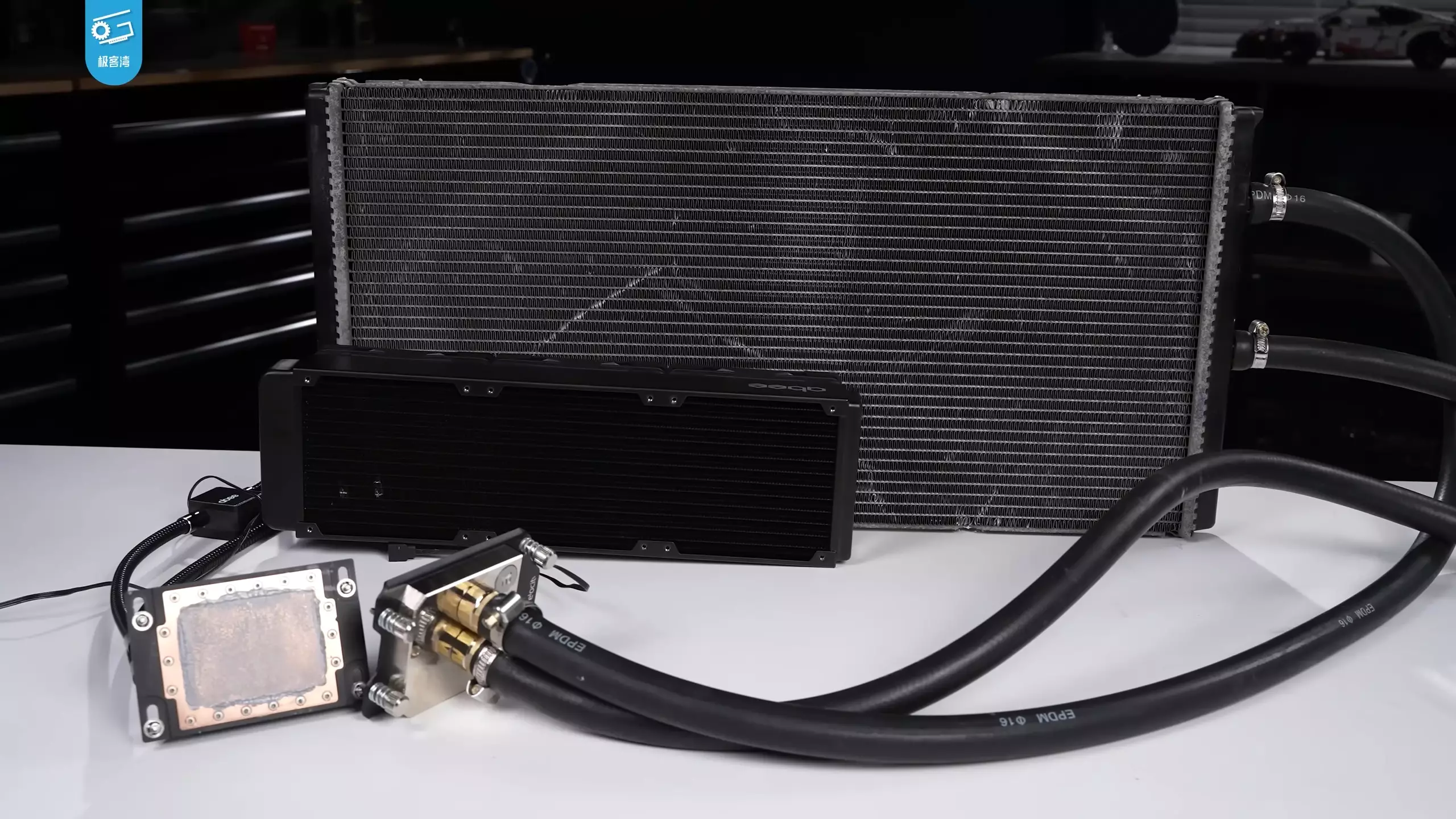In the world of high-performance computing, cooling remains a persistent obstacle. Enthusiasts and professionals alike have long relied on traditional liquid cooling systems—pumps, radiators, and water blocks designed specifically for PCs. But what happens when the boundaries of innovation are pushed beyond typical configurations? A recent, audacious experiment by the YouTube channel Geekerwan has daringly attempted to answer this question. By repurposing automotive cooling components—specifically, a BMW M4 radiator, Toyota Highlander fans, and parts of an engine cooling system—they constructed a hybrid cooling system capable of tackling one of AMD’s most demanding processors: the Ryzen Threadripper Pro 9995W.
This experiment isn’t just about beating synthetic benchmarks; it’s a critique of complacency in PC cooling technology. The project boldly questions whether the cooling limitations set by standard PC components are a barrier that should be accepted or one that can be disrupted. Their success—achieving almost 5 GHz across all 96 cores—exhibits the potential lying dormant in unconventional cooling solutions. This innovation, while not a practical everyday method, exemplifies a mindset that refuses to accept the status quo and aims to understand the limits of hardware under extreme modifications.
Technical Achievements and Surprising Outcomes
The AMD Ryzen Threadripper Pro 9995W stands out as a powerhouse, housing 96 cores capable of pulling over 1,000 watts under heavy load. The standard approach involves sophisticated liquid cooling or extreme overclocking with liquid nitrogen; the former is already a challenge, and the latter is impractical for most. Geekerwan’s experiment diverged spectacularly from convention, constructing a cooling setup reminiscent of a car’s radiator system. Despite its oddity, it managed to sustain a 4.9 GHz overclock across all cores—an impressive feat considering the thermal constraints and the unconventional components used.
The achievement extended beyond just the clock speed. The system endured a power draw surpassing 2,000 watts during the run, pushing the limits of what is possible with such a makeshift cooling setup. The fact that the whole setup remained stable enough for a Cinebench R23 test indicates that even a bulky, car-derived radiator can, in theory, handle serious thermal loads—if only marginally and with significant under-utilization of its cooling capacity.
What’s particularly compelling about this experiment is that it underscores the disconnect between theoretical cooling capabilities and practical application. The car radiator and associated fans were not optimized for the CPU’s heat flux. The fans, drawn from a seafood market, consumed a hefty 100 watts to move air across the radiator—testament to how energy inefficient this makeshift cooling system was. Nonetheless, the ingenuity demonstrates that, under certain conditions, automotive cooling technology has the potential to serve as an experimental, if not practical, alternative for extreme PC overclocking.
Limitations, Risks, and Lessons Learned
Despite its impressive outcome, this project sheds light on the inherent flaws and risks of such radical modifications. The setup struggled with the heat transfer efficiency, leaving much of the radiator’s potential unused during the overclocking process. Additionally, it strained the chip and motherboard’s power regulation systems, causing instability and fluctuations in performance. The waterblock, which is engineered for PC components, likely became a bottleneck in heat dissipation, further illustrating that cooling hardware components are specialized for specific environments—something automotive radiators are not.
The risks involved in such experiments are significant. The entire assembly required rigging and an understanding of both automotive and PC cooling systems—a crossover that’s rarely necessary in typical scenarios. More importantly, attempting such bespoke solutions bypasses the safety and reliability features built into consumer-grade cooling products. The danger of electrical shorts, physical damage, and thermal runaway becomes a tangible concern.
Ultimately, while the experiment didn’t produce a practical cooling solution for mainstream use, it provided invaluable insights into the thermal limitations of high-core-count CPUs and the potential for unconventional cooling. It also emphasizes that innovation often emerges from these borderline experiments—though it’s imperative to recognize the impracticality and risks involved. Overclockers should view this more as an inspiring proof of concept than a blueprint for real-world applications.
Critical Reflection: Practicality vs. Curiosity
At its core, this experiment exemplifies the spirit of radical inquiry that drives technological progress. However, the pragmatic implications remain questionable. Modern PC components—and the cooling solutions designed specifically for them—offer a balanced trade-off of performance, safety, and ease of use. Venturing into automotive cooling territory yields intriguing academic insights but comes with prohibitive inefficiencies and hazards.
In the broader context, this dabbling outside traditional boundaries can inspire industry innovation. Perhaps future cooling technologies will borrow ideas from automotive or industrial systems, tailoring them to the specific thermal demands of high-performance computing. Until then, however, the costs, risks, and complexities render such solutions purely experimental and not advisable for everyday overclocking or system building.
In essence, Geekerwan’s daring trial is a testament to human curiosity and ingenuity—challenging the perceived impossibility of repurposing car parts for cooling PCs. Nevertheless, the pursuit of practicality must remain grounded in safety, efficiency, and sustainability. While the experiment might not revolutionize how we cool CPUs, it undeniably expands our understanding of thermal management’s boundaries—reminding us that sometimes, the most groundbreaking ideas come from audacious curiosity rather than conventional wisdom.

